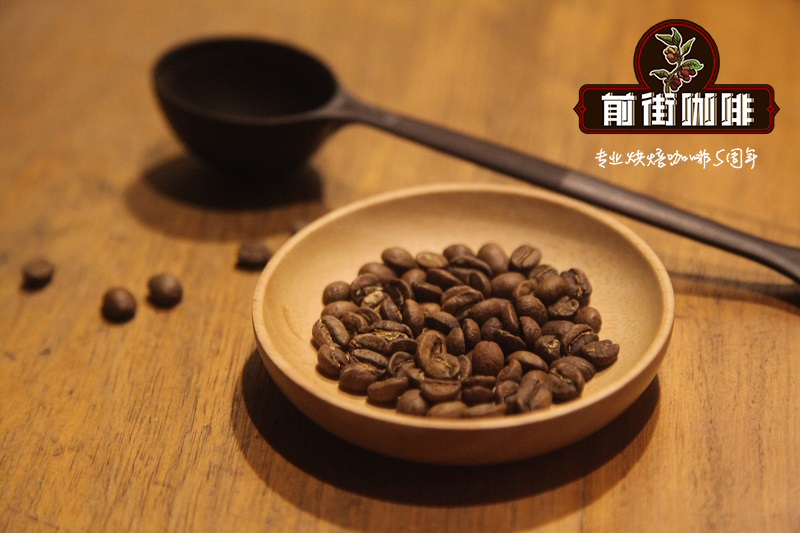Introduction to the characteristics of water quality, climate and planting altitude of mocha coffee in Yemen

Professional coffee knowledge exchange more coffee bean information please follow the coffee workshop (Wechat official account cafe_style)
The coffee tree originated in Ethiopia, which was originally a wild plant here. The name "coffee" comes from the Ethiopian town of "Kaffa". In fact, many coffee trees in Ethiopia are still wild plants, and the coffee grown on this coffee tree is full-grained and slightly alcoholic. Humans may have known how to grow coffee trees as early as the 9th century, but who, how and why is still a mystery. The local legend in Ethiopia is that coffee began to be used by monks to keep a clear head when praying at night.
Today, Ethiopia is an important coffee producer, with about 12 million people engaged in coffee production and a major exporter of Arab coffee beans in Africa. The high-quality coffee here is of excellent quality and is worth looking for.
Various forms of coffee cultivation can be found in Ethiopia: everything from wild coffee forests and semi-developed land to traditionally operated plots to modern plantations. About 50% of the coffee is grown more than 1500 meters above sea level.
Harald coffee (Harrar) is the highest growing area of all coffee in Ethiopia. Harald coffee can be divided into long coffee beans and short coffee beans, of which long coffee beans are the most popular. It has a soft taste, with a special wild flavor of wine, and slightly sour taste, unforgettable after drinking. Similar to Yemeni mocha coffee, it is a high-quality coffee.
Sidamo and Djimmah in the south are also well-known coffee producers, and the coffee produced is slightly different from that produced by Hara, with a refreshing sour taste and drupe aromas. Djimmah is mainly sold under two brands: Limu and Babeka. Sidamo is sold under the brand name Yega Schiffe ((Yirgachaffe). Gemma and Sidamo coffee beans are not very attractive in appearance, but they taste good.
In particular, in Sidamo, there is a community domain name called Yirgacheffe, whose coffee has very charming features, with the aroma of jasmine and lemon, as well as the special taste as sweet as honey, so it is famous all over the world.
Why is the port of Mocha in the country of Yemen, but Ethiopian coffee is also called mocha? That's because Ethiopian coffee was previously exported from the Yemeni port of Mocha, so it is also named after mocha and subdivided by different names of origin, such as Mokhara, Mokajima and so on.
So it is also mocha coffee, it is possible that its Yemeni mocha coffee comes from Yemen, or it may come from Ethiopia Yemeni mocha coffee.
Important Notice :
前街咖啡 FrontStreet Coffee has moved to new addredd:
FrontStreet Coffee Address: 315,Donghua East Road,GuangZhou
Tel:020 38364473
- Prev

Introduction to the coffee flavor of Ruoxia Village Manor what are the characteristics of Rose Xia Village Manor? Coffee drinking method in Ruoxia Village
Professional coffee knowledge exchange more coffee bean information please follow Coffee Workshop (Wechat official account cafe_style) Geisha originated in Ethiopia and carried forward in Panama. Adam, the owner of Rose Summer Village, found the native tree species of geisha coffee with the help of William Bout, the famous donkey landowner. At present, the manor of Ruoxia Village has 300 hectares, and it will increase next year.
- Next

Introduction to the characteristics of water quality, climate and planting altitude in rose summer in Ethiopia and Panama
Professional coffee knowledge exchange more coffee bean information please follow the coffee workshop (Wechat official account cafe_style)
Related
- Detailed explanation of Jadeite planting Land in Panamanian Jadeite Manor introduction to the grading system of Jadeite competitive bidding, Red bid, Green bid and Rose Summer
- Story of Coffee planting in Brenka region of Costa Rica Stonehenge Manor anaerobic heavy honey treatment of flavor mouth
- What's on the barrel of Blue Mountain Coffee beans?
- Can American coffee also pull flowers? How to use hot American style to pull out a good-looking pattern?
- Can you make a cold extract with coffee beans? What is the right proportion for cold-extracted coffee formula?
- Indonesian PWN Gold Mandrine Coffee Origin Features Flavor How to Chong? Mandolin coffee is American.
- A brief introduction to the flavor characteristics of Brazilian yellow bourbon coffee beans
- What is the effect of different water quality on the flavor of cold-extracted coffee? What kind of water is best for brewing coffee?
- Why do you think of Rose Summer whenever you mention Panamanian coffee?
- Introduction to the characteristics of authentic blue mountain coffee bean producing areas? What is the CIB Coffee Authority in Jamaica?

